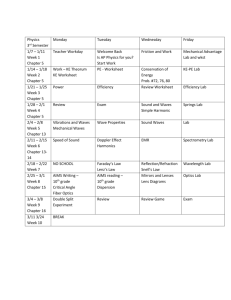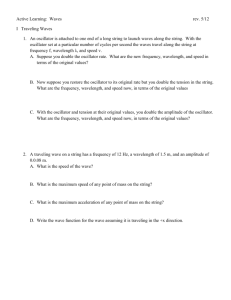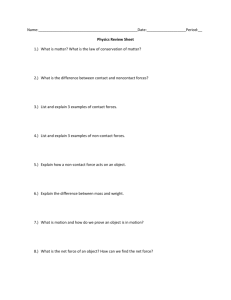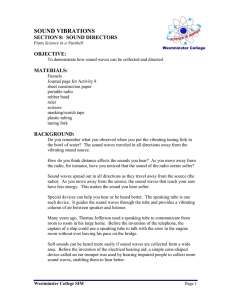Lab 11: Waves and Sound - University of Michigan
advertisement
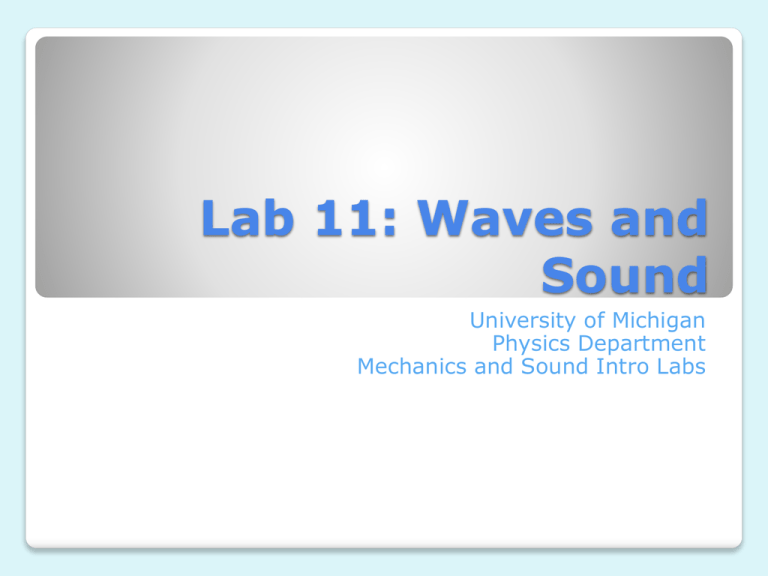
Lab 11: Waves and Sound University of Michigan Physics Department Mechanics and Sound Intro Labs A wave is defined as any periodic disturbance that propagates through a medium. An understanding of waves that you will gain from this lab will be invaluable in your further studies of physics. Today you will investigate sinusoidal waves on a string and in a resonance tube in the form of standing waves. You will use plastic tubes to study standing waves. You can adjust the length of the tube using the plunger to create “open-closed” systems. You will first explore transverse waves on a string. For this purpose, you have been provided with a mechanical oscillator and a frequency driver. You will need to attach a string to the oscillator and hang it over a pulley to attach a mass hangar to the string. You will also need to make sure that the frequency generator is connected to the wave driver by banana cables. In this portion of the lab, you will record the frequencies of the normal modes on the string for three different tensions, which can be adjusted by adding or removing mass from the hangar. The sine wave generator The wave driver You will next explore longitudinal waves in a tube. You will see a 4foot long resonance tube on your table. It will have a speaker at one end and a plunger in the other for adjusting the length of the pipe cavity. You will need to take the banana cables from the mechanical oscillator and insert them into the banana jacks on the speaker. You will use a microphone attached to a meter stick to investigate the standing waves of sound inside the tube. Please keep your amplitudes low because the sound becomes very loud when you find the resonance frequency. The speaker used in today’s lab. Be considerate of your classmates and GSI by keeping the speaker amplitude low. You will also have a chance to directly calculate the speed of sound in air. You will need to snap or click something near one end of the ‘open-closed’ tube. You will then observe the echo pulse and use this information to directly calculate the sound speed in air. That’s all there is to it! Clapping, snapping, or using a dog training clicker should all produce an acceptable sound speed measurement. After this lab, you will have gained a great insight into the workings of waves and sound. Waves are so important in physics that this lab may be one of the most important to your study of physics all semester. You will definitely see these concepts again when you study light next semester. ^ The principle of linear superposition will be very important in your future studies of light.

